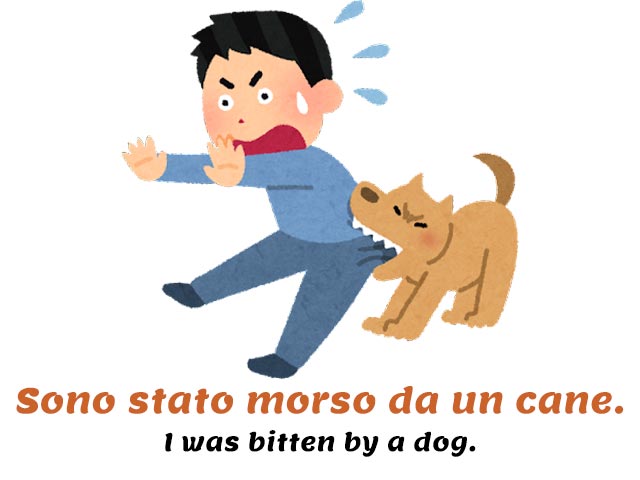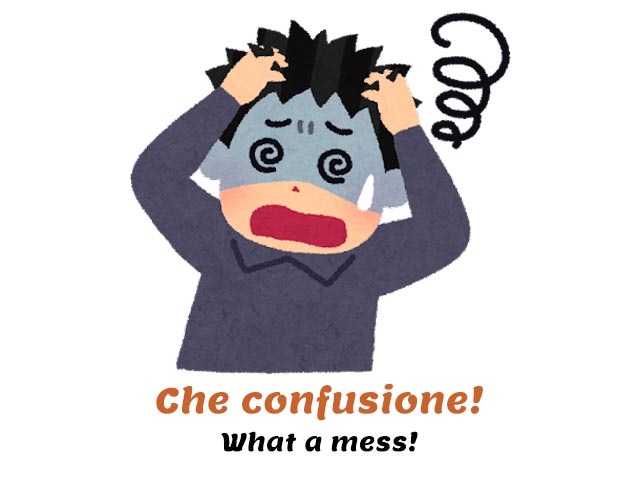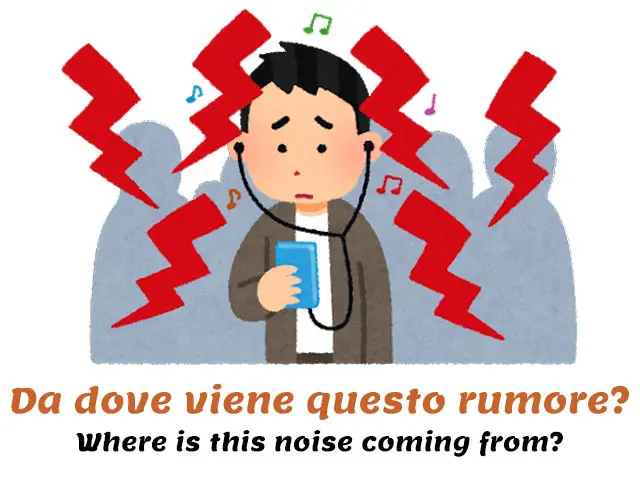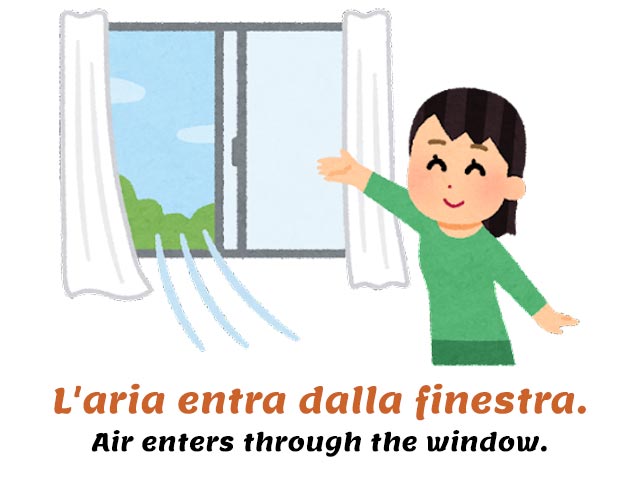Italian grammar
How to use the preposition da
Let me start with a general explanation of how prepositions work in this language.
Every preposition in Italian can be either semplice, simple, or articolata, “with an article”.
Italian simple prepositions are what you probably already know as prepositions: DI, A, DA, IN, CON, SU, PER, TRA, FRA.
Vengo da Venezia.
I come from Venice.
If necessary, any of these prepositions can be followed by an indefinite article, which is placed in front of the preposition as a separate word.
Sono stato morso da un cane.
I was bitten by a dog.

However, when used in a sentence, DI, A, DA, IN and SU cannot be followed directly by a definite article. The definite article merges with these prepositions to form what is called a preposizione articolata, “preposition with an article”.
Il ladro entra dalla finestra.
The thief comes in through the window.
Ci sono tre metri dal divano al televisore.
There are three meters from the sofa to the TV.
You cannot say:
Il ladro entra da la finestra.
Ci sono tre metri da il divano a il televisore.
Remember: if you need to use a definite article before DI, A, DA, IN and SU, you must merge the article with the preposition itself.
PER, TRA and FRA are never merged with a definite article, so they exist only in their simple form.
Spegni il fuoco tra dieci minuti.
Turn off the heat in 10 minutes.
Questo regalo è per te.
This gift is for you.

CON can only merge with the masculine singular article il to form the preposition COL. No other variants are allowed.
That said, how many variants are there of the preposition da in Italian? Have a look at the table below.
Preposition da in Italian
| DA | dal | dallo | dalla | dai | dagli | dalle |
| + | il | lo | la | i | gli | le |
Because there is a preposizione articolata for each definite article, there are a total of 7 variations of the preposition da in Italian.
For example, you can say…
L’ufficio rimarrà chiuso dalle 8 alle 12.
The office will be closed from 8 a.m. to noon.
Vengo dagli Stati Uniti.
I come from the United States.

Don’t worry. It all sounds so tiresome, but I assure you it’s not!
Now that we’ve seen how to use the preposition da in Italian, let’s see when you can use it.
When to use the preposition da in Italian
As you probably already know, the Italian preposition da is roughly equivalent to the English preposition from. However, there are many cases where this rule does not apply.
At first glance, it can be difficult to understand when and how to use this preposition. However, as you will see, there are a number of rules that tell you exactly when to use da in a sentence. You must use in and its variants with an article…
- to indicate a starting point or source
- to translate since and for
- to translate the agent in the passive voice
- to describe the function of something
- to specify a place you walk/drive/pass through
- to indicate the reason for an emotion you’re feeling
- to introduce someone you are visiting
- to introduce someone’s age with certain adjectives
- to describe people
- to compare things

Che confusione! This can be… quite overwhelming, so let me give you some real-life examples for each of the given situations.
Preposition da in Italian for every situation
To indicate a starting point or source, especially with the verb venire…
Siamo partiti da casa alle 8. Saremo lì verso mezzogiorno.
We left home at 8 a.m. We will be there around noon.
Vengo da un paesino in provincia di Pescara.
I come from a small town in the province of Pescara.
Da dove viene questo rumore?
Where is this noise coming from?

To translate since and for…
Lavoro in questo ufficio dal 2009.
I’ve been working in this office since 2009.
È da un’ora che ti aspetto!
I’ve been waiting for you for an hour!
Piove da quasi due giorni.
It has been raining for almost two days.
To translate the agent in the passive voice (“by”)…
Paolo è stato punto da una medusa ed è andato in ospedale.
Paul was stung by a jellyfish and went to the hospital.
Giorgio viene fermato dalla polizia.
Giorgio is stopped by the police.

To describe the function of something…
Ci sono due martelli sul tavolo da lavoro.
There are two hammers on the workbench.
Hai visto i miei occhiali da lettura?
Have you seen my reading glasses?
Mio zio ha un cavallo da tiro.
My uncle owns a draft horse.
To indicate a place you walk/drive/pass through…
Se passi dal centro del paese, fai attenzione ai vigili.
If you pass through the town center, be careful of the vigilantes.
L’aria entra dalla finestra.
Air enters through the window.

To specify the reason for an emotion you’re feeling…
Vincenzo si mise a urlare dalla rabbia.
Vincenzo began to shout in anger.
Adele saltellò sul posto dalla felicità.
Adele jumped on the spot for happiness.
To introduce someone you are visiting…
Verrò da te verso le tre, sei a casa per quell’ora?
I’ll come to you around 3 o’clock, will you be you home by then?
Dovrei andare dal parrucchiere a farmi tagliare i capelli.
I should go to the hairdresser and get a haircut.
Dormo spesso dalla nonna.
I often sleep at grandma’s.

To introduce someone’s age with certain adjectives…
Stefano, che cosa vuoi fare da grande?
Stephen, what do you want to be when you grow up?
Da bambino mi piaceva spesso andare a pescare con papà.
When I was a child, I often liked to go fishing with Dad.
To describe people…
Valerio è un bel ragazzo dagli occhi verdi.
Valerio is a handsome boy with green eyes.
L’assassino è un uomo dai capelli rossi.
The murderer is a red-haired man.
To compare things…
Il testo che hai scritto è completamente diverso da quello che ti ho dettato!
The text you wrote is completely different from what I dictated to you!
These are the main rules you need to follow to use the preposition da correctly in Italian. And if you’re still not sure if you can use it in a sentence, remember that the other Italian prepositions have their own rules. You can go by exclusion, andare per esclusione!
More free Italian resources
You might want to keep learning Italian online with these free Italian resources:
❤️ If you liked this guide on the preposition da in Italian, share it with your friends!


